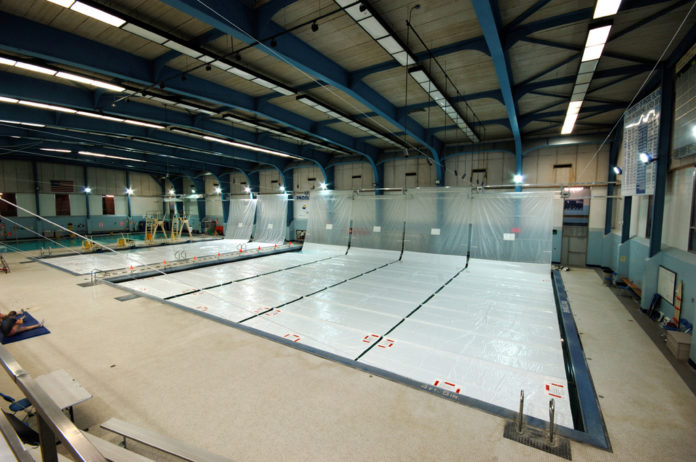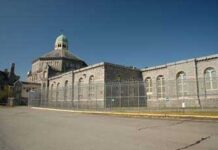
For years, the Tootell Aquatic Center at the University of Rhode Island had been a huge drain, of sorts.
It’s expensive to heat the three pools on the Kingston campus and keep them filled with water and the proper mix of chemicals. But one simple change has made it much less costly: installing pool covers. School officials figure that automated pool covers installed this year will save roughly $50,000 in heating costs annually. Their installation also will stop the loss of 290,000 gallons of water every year.
“The covers prevent evaporation,” explained Dave Lamb, URI’s utilities engineer. “They prevent heat loss. And they reduce the need for more chemicals.”
The pool covers are just a small portion of infrastructure improvements under way at URI in a wide-ranging, multimillion-dollar project to improve energy efficiency at the university’s various properties, including more than 250 buildings.
URI has an $18 million performance contract with NORESCO, a Westborough, Mass.-based energy-services company. Under the agreement, the school will use projected energy-cost savings over the next 12 years to pay for improvements now.
Those improvements include switching to newer energy-efficient lighting, replacing drafty windows and installing high-tech heating and air-conditioning systems and energy-management controls.
When completed in 2009, upgrades on URI’s campuses will save more than 7 million kilowatt-hours of electricity and 42 million pounds of steam annually, URI and NORESCO estimate. That translates to about $1.3 million a year in today’s energy costs.
But URI cannot cut that amount from its budget, at least not yet. The terms of the NORESCO’s contract call for the savings over 12 years to be used to pay for the improvements NORESCO makes in the next two years.
“It’s a different way to get projects done,” Lamb said recently. “It doesn’t cost URI any additional money – the savings pay for the projects. Then eventually when the projects are paid off, the savings go to the school. And at the same time, we’ve improved and protected our properties.”
The agreement with NORESCO was hammered out with the help of the state Office of Energy Resources, which is promoting the use of energy-services companies for both the public and private sectors. In fact, the state awarded another energy-services company a $6 million performance contract – similar to the one at URI – to replace inefficient equipment at administrative offices in Providence. Similar work has been done at T.F. Green Airport.
And state officials are close to awarding energy-efficiency performance contracts for work at Zambarano State Hospital in Burrillville and the Pastore Center in Cranston, a 100-plus-building complex that houses the R.I. Department of Mental Health, Retardation & Hospitals and other state agencies.
Tim Howe, manager of the energy-efficiency program at the Office of Energy Resources, said a similar effort is under way at Rhode Island College.
At URI, the move toward efficiency began in 2005 when several energy-services firms conducted a preliminary energy audit for the athletic complex at the Kingston campus as part of the university’s request for proposals.
Based on that audit, URI hired NORESCO, which then performed an investment-grade audit – a detailed study of the systems and the potential savings – on the four-building athletic complex and the Memorial Union over the summer.
Lamb said subcontractors have completed a lot of the work in those buildings, including installing high-intensity, fluorescent lights in the gyms. Those lights use less electricity
and are brighter than the metal-halide lighting they replaced.
Officials said the athletic complex – including Keaney Gym, Mackal Field House, Tootell complex and the Ryan Center – will undergo $3.3 million in improvements. That work alone will save 1.6 million kilowatt-hours of electricity and 20 million pounds of steam annually, according to NORESCO.
The $1.2 million of work at the Memorial Union is expected to save 500,000 kilowatt-hours and 5.3 million pounds of steam each year.
John Hobbes, a NORESCO spokesman, said the athletic complex and Memorial Union work will lead to an energy-cost savings of $596,000 annually.
NORESCO has also conducted a detailed energy audit of the buildings at the university’s Narragansett Bay and Providence campuses.
Work on those campuses is expected to begin in the coming months. At the same time, NORESCO will conduct an investment-grade audit of the remaining buildings on the Kingston campus – what is expected, based on the preliminary audit, to lead to $12 million worth of improvements in 2009. •












